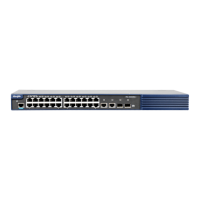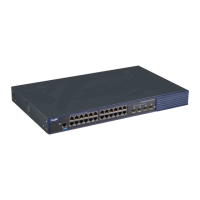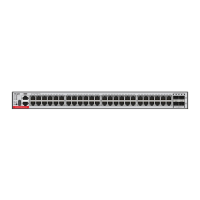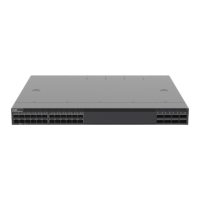If the VRRP group is working in the preemption mode, once a device finds its priority is higher than
the priority of the master, it will become the master device of the VRRP group. If the VRRP group is
not working in the preemption mode, even if a device finds its priority is higher than the master’s
priority, it will not become the master device of the VRRP group. In case the VRRP group is using the
Ethernet interface IP address, the setting of the preemption mode does not make sense, because
that VRRP group has the highest priority and thus automatically becomes the master device in the
VRRP group.
The following example enables IPv4 VRRP on interface GigabitEthernet 0/0.When VRRP group 1
finds its priority (200) is higher than that of the current master device, it will declare its preemption of
master after a delay of 15 seconds.
Ruijie#configure terminal
Ruijie(config)#interface GigabitEthernet 0/0
Ruijie(config-if-GigabitEthernet 0/0)#no switchport //used on the switch.
Ruijie(config-if-GigabitEthernet 0/0)#ip address 10.0.1.1 255.255.255.0
Ruijie(config-if-GigabitEthernet 0/0)#vrrp 1 ip 10.0.1.20
Ruijie(config-if-GigabitEthernet 0/0)#vrrp 1 preempt delay 15
Ruijie(config-if-GigabitEthernet 0/0)#vrrp 1 priority 200
The following example enables IPv4 VRRP on interface GigabitEthernet 0/0. When VRRP group 1
finds its priority (200) is higher than that of the current master device, it will declare its preemption of
master after a delay of 15 seconds.
Ruijie#configure terminal
Ruijie(config)#interface GigabitEthernet 0/0
Ruijie(config-if-GigabitEthernet 0/0)#no switchport //used on the switch.
Ruijie(config-if-GigabitEthernet 0/0)#ipv6 enable
Ruijie(config-if-GigabitEthernet 0/0)#ipv6 address 2001::2/64
Ruijie(config-if-GigabitEthernet 0/0)#vrrp 1 ipv6 FE80::1
Ruijie(config-if-GigabitEthernet 0/0)#vrrp 1 ipv6 2001::1
Ruijie(config-if-GigabitEthernet 0/0)#vrrp ipv6 1 preempt delay 15
Ruijie(config-if-GigabitEthernet 0/0)#vrrp ipv6 1 priority 200
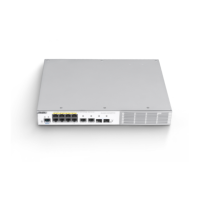
